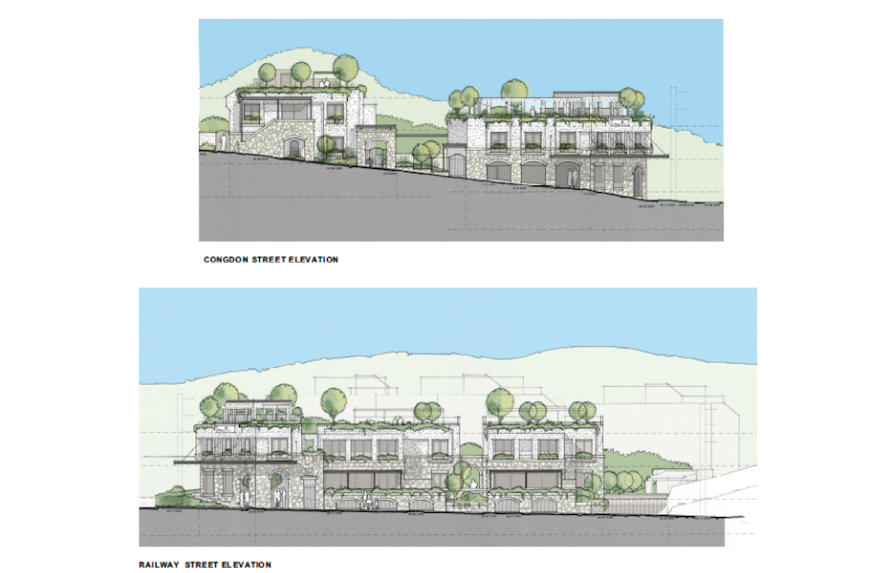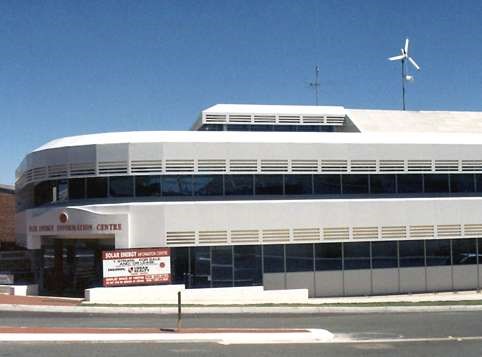In the midst of and predicted post Corona crisis it is an ideal time to envision the future and identify where perhaps our global collective thinking as applied to Australia may be going wrong. Out of the normal buzz of economic activity it is an ideal time to reflect and re-assess future directions.

Addressing Climate Change creates a myriad of different opinions but the Big Elephant in the room has always been Global Population along with degradation of the biosphere and natural world by mankind for at least 100 years now. Arguably there is now a herd of elephants in the room responsible for Human Impacts on Climate Change. Putting off effective action cannot be avoided for much longer. Rates of consumption combined population growth has made survival untenable
If was easy for Governments to deal with it, then it would be have happened by now. It is not easy for a myriad of reasons.
Complex System
It is highly complicated to assess the best methods of dealing with Climate Change at the present time. We are sure that all the indicators point towards an emerging apocalypse that will be distinctly evident by the year 2050, unless changes are made soon.
The Green movement of recent times would have you believe that there are a couple of magic bullets and everything will be sorted. Nothing is further from the truth.
Unfortunately, the Green parties of the last two decades are very different to the Green parties of old. Slowly, they became more overtly socialistic and the natural world does not play as big a part in their policies.
For instance, there is never any mention of Global Population, or of the impact of the immigration population ‘ponzi-scheme’. Given that it now simply erodes the quality of lives in Australia, it is hard to understand their priorities. Quantity over quality is no longer working.
Planet of the Humans
The recent Documentary by Jeff Gibbs and Michael Moore highlights rather bluntly, though in some cases inaccurately, that renewable energy will not deliver and has many embodied energy, life cycle difficulties and ecological damages in its implementation. Many of the Green movements have chosen to ignore the facts and economic realities. What their strongly stated position does do is highlight the extent of their delusional beliefs and lack of knowledge of life cycle costs and realities of solar and renewable energy systems, as they exist today. The cost is actually much higher than they would have you believe. However, it is not as unfeasible as the fossil fuel drivers of the right would also have you believe. Two wrongs don’t make a right!
The political reality and benefits in addressing Climate Change will require a total systems analysis and implementation approach, and it will likely be 80 years in the making, not 10 years as the extreme left would want you to believe.
NEG in Australia
The Australian NEG that was proposed after comprehensive development by Malcolm Turnbull, largely torpedoed by the extreme right and vested interest in the fossil fuel industries in Australia, would have been a good moderate direction for Australia. It was a start to integrate all forms of energy and allow smart policies to evolve and keep energy prices down, while encouraging innovation with a level corporate playing field for all sources over the coming decades. This would be a solid reality check and especially provide a solid platform for the improvements in quality of renewable energy, systems management and controls needed for the industry to play a solid part in reducing emissions and deliver at least 25% of power by about 2060/70.
Global Population
The herd of elephants in the room as expressed in the Moore movie, should be the prime focus for all countries to achieve sustainable economics, in addition to smart energy policies and conservation programs. The UN needs to be a critical part of this and help shift priorities in favour of the future of the planet and mankind for the coming generations by setting priorities accordingly. However, in the past 50 years short-term thinkers in the UN have ignored population growth, labeling those who want to discuss it as racists. This is unfair and simply has to stop, if reason is to prevail.
There are many humane ways of reducing population and it will start by stopping the ‘population-ponzi’ scheme – engineered by the West to pump up the GNP figures. Fair distribution of it though is in fact a scam as we have seen over the last 20 years in Australia. Everything else cited by economists as being to blame seems intended to keep the higher echelons happy first. The natural world, along with the welfare of future generations, seems to be an after thought.

Obviously consumer demand for all goods, including real estate, is driving profits to land developers and project builders. Apart from that, who is actually winning? Our disposable income has been dropping for a long time now. Do we need migration to keep our population stable? The answer is no:

Taking in up to 200,000 people a year is simply not desirable and it seems to be a case of Government bowing to the pressure of builder developers to sustain their profits. Australia only needs an average of 60,000 per year to achieve half that growth, as shown in the following graph. But the accumulation of 100,000 people per year migrating to Australia still represents the ‘ponzi scheme’ benefitting a minority.

Graph supplied by Peter Strachan 2019
Clearly, Australians need to be questioning levels of immigration post the Corona Pandemic. The electorate needs to see how migration increases opportunity for all and results in an increased share of wealth for all Australians. If inexplicable in those terms, an explanation of how they benefit long term from large migration intakes is desperately needed from Government. More importantly, how on a global scale, the migration policy impacts Australia and positively contributes to Climate Change action. It is not a simple situation.
Solutions Focus
Well that is quick run down of the problem as I currently see it. Here is my current guess at a strategy based, total systems analysis approach, and value system based ethos:
A Possible Viable way to a Green World?
- Reduce the world population by 35% by the end of the century (Australia needs to discover how they can assist from our privileged position)
- Set higher, more effective Green Building regulations to save over 70% by the end of the century for buildings (This needs to be 50% overall to the entire built environment ledger)
- Increase density around public transport nodes to all, but eliminate the need for any more Greenfields developments, saving land clearing and reducing car use.
- Set higher performance standard for all renewable energy systems, capital replacement and maintenance regimes so a realistic lifecycle cost promotes quality standards to work. Fund more R&D for better systems.
- Rejuvenate massive tree planting programs to undo as much damage as possible from uncontrolled land clearing of the 20th century
- Aim for 25% minimum contribution to a smart grid complex integrating solar and renewable energy systems (evolution rather than revolution)
- Set up a Circular Economy model for all manufacturing, and waste recycling – requiring reinventing and not simply tweaking a few simple processes. This needs to be done by setting standards for systems assessments over the lifecycle cradle-to-grave, and preferably cradle-to-cradle, as a requirement for licensing.
- Encourage collective eco villages for the young to provide a sustainable life style in country areas. This would provide sorely needed labour and technical expertise in rural areas, to decentralize the extreme densities of major cities and facilitate healthy food production. The format should be interdependent communities that substantially lower set up costs.
- Educate and train the population (starting at school) to eat less, better nutrition and have culinary skills to grow, and cook healthy food.
- Educate and train people to exercise to avoid bad health and mental problems.
- Clean up lingering fossil fuel use as much as possible and use it to manufacture new renewable energy based products and systems while it’s plentiful and cheap.
- Create a hydrogen economy as quickly as possible, using solar electrolysis of clean water as part of the transport fuel mix.
- Develop new nuclear systems, such as Helium3, to take over the main base load power by the end of the century and beyond.
- Move the world to a ‘responsible capitalism’ political system, where reason and proper scientific analysis will prevail avoiding or averting crises and thus create a freer, happier populace throughout the world.
- Move away from Communism, religious fundamentalism, and extreme and brutal capitalism. It is a dangerous and irrational format for living in an over populated world.
- Create a respectful society with self-discipline and a desire to contribute to the greater good.
- Develop smart, holistic defence systems that protect future security for all humanity and contain the rise of those states wishing to destroy it (This priority could arguably be considered as a first rather than last priority).
The above is a little different from the UN and IPCC hit list, but I see this as something that will eventually work thermodynamically, and it can all happen humanely over the next 80 years or so. The built environment plays a critical part and seems hardly ever mentioned in political arguments and rational projections for the future.

Sustainable and efficient housing opportunities such as the new development in Swanbourne – Illios.
Big Ticket Items
The reduction of energy use in the built environment, the reduced consumption and reduced population will cut emissions by at least 85% alone. With the implementation of renewable energy, tree planting, cleaning up the oceans, waste management, and new social improvements, we will easily achieve a balanced thermodynamic and green environment for the 22nd century.
All this will take ethical capital and the human race will have to moderate the pursuit of individual wealth and materialism in favour of a certain future for the next generations. They will also have to buy into the proposition.
After 2050
With positive action at all levels of society, the second half of the century could actually end up carbon minus for the last 40 years, averting a runaway Greenhouse Effect. From then on, we would be in management control of biosphere for a healthy planet for the first time ever.
The challenge is for the ‘old fogies’ of our upper echelons to move on or help out (as Bob Dylan sang in the 1960s: ‘The Times are a Changing’).
The sooner both the extreme right and left throughout the world wake up to their destructive beliefs, or be replaced from power, the better. We need moderators who deliver more than ever. Where are they? More importantly how do we start to attract leaders who will fit the ethos?
Interim Conclusion
Until we are more enlightened about the present, have a desire to be more responsible, and are prepared to live by example pushing strong values, we will continue to fail. We nee to have a better, more humane society, which deals with reality and scientific evidence rather than ideology and dogma. Our built environments clearly need an overhaul, along with numerous other initiatives. But without a reduction of Global Population, redefining notions of growth, developing new values based on quality rather than quantity, then technical improvements will mean our future remains very uncertain.
At Wise Earth we have a history of aiming at a viable, sustainable planet! Hopefully many more businesses will join a sustainable future soon. There is time pressure to do so.









